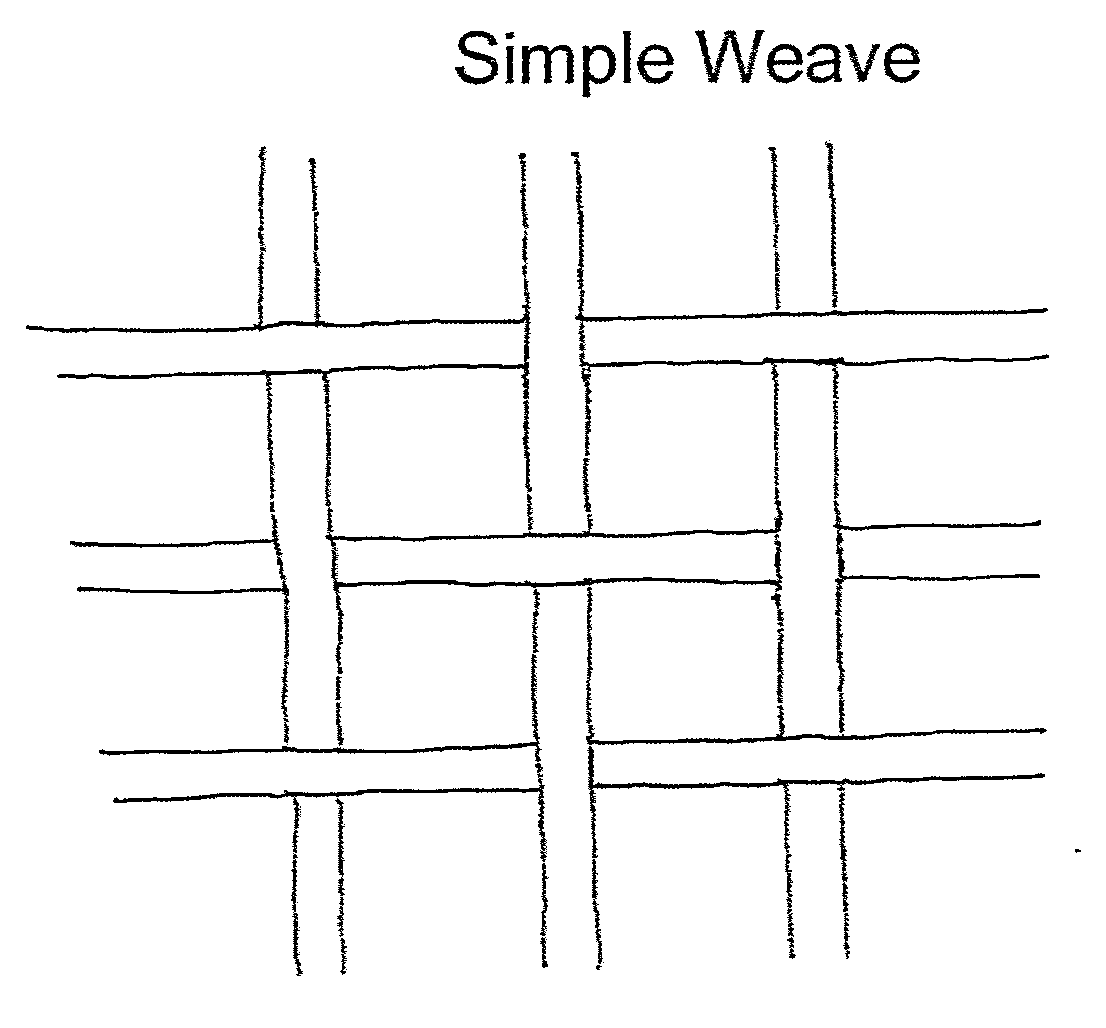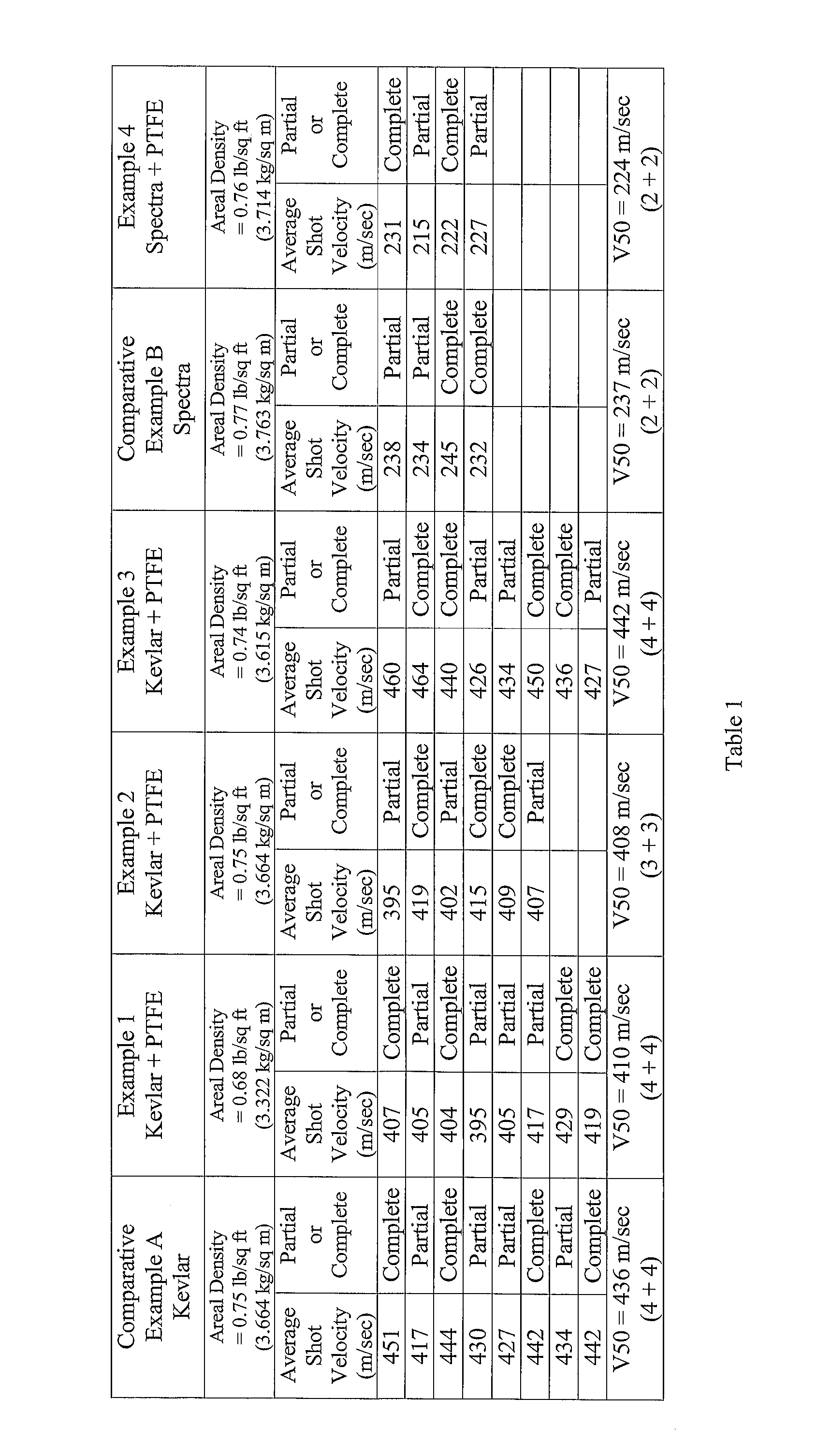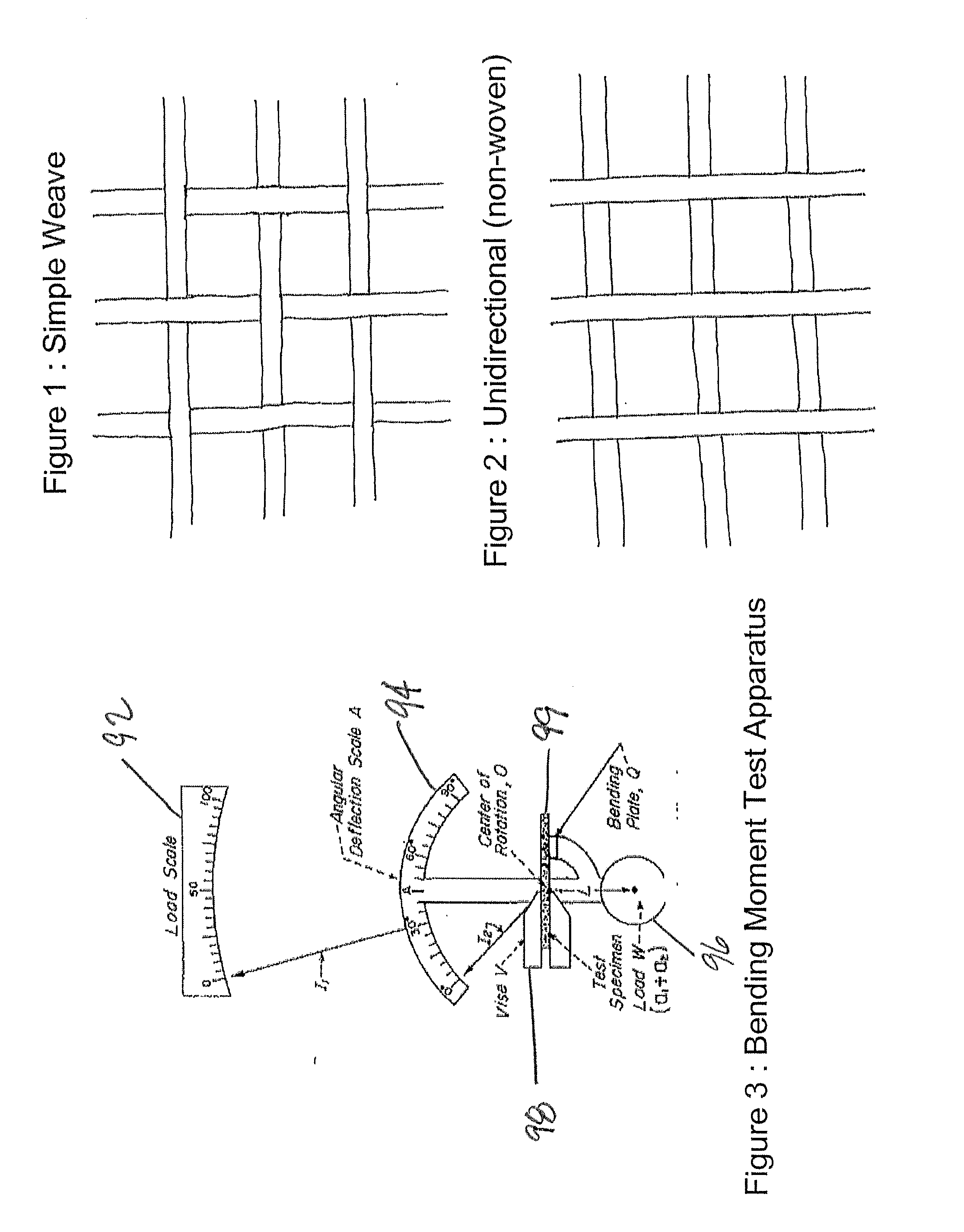Ballistic Resistant Composite Fabric
a composite fabric and ballistic resistance technology, applied in the field of fluoropolymer composite fabrics, can solve the problems of reducing the life of the rope, lcp fibers are particularly susceptible to this failure mechanism, and the tensile and bending stresses of high-tensile and bending stress, and achieve the effect of improving the handleability of the ballistic resistance fabri
- Summary
- Abstract
- Description
- Claims
- Application Information
AI Technical Summary
Benefits of technology
Problems solved by technology
Method used
Image
Examples
examples
[0036]In the examples presented below, various samples and comparative samples were prepared and tested according to the described test methods. The examples are intended to illustrate the invention, but not to limit it. Rather, the inventors intend for their invention to be given the full scope of the appended claims.
Testing Methods
V50 Test
[0037]A 15 inch (38.1 cm) by 18 inch (45.7 cm) panel was constructed using multiple plies of the woven fabric material to achieve an areal density (i.e., mass per unit area) for the panel of about 0.75 lb / sq ft (3.7 kg / sq m). Each panel had a 1 inch (2.54 cm) perimeter stitch and an x-stitch through the diagonals of the panel served to hold the layers together. Panels were tested to measure V50, the velocity of a bullet corresponding to the 50% probability that a bullet will completely pass through the panel. The tests were performed as follows. Each panel was placed inside a 70d black nylon pouch. The pouch was then fixed to a backing material c...
example 1
Kevlar Plus ePTFE
[0048]A non-twisted 600d Kevlar fiber (Part Number X300 1F1618, E.I. DuPont de Nemours, Inc., Wilmington, Del.) and 400d multifilament ePTFE fiber (Part Number V112939, W.L. Gore & Associates, Inc., Elkton, Md.) were obtained. The ePTFE fiber was twisted at 4 twists / inch (157 twists / m) in a Z configuration. A simple weave having 29 pics / inch (11.4 pics / cm) and 29 ends / inch (11.4 ends / cm) was created using one ePTFE fiber for every 3 Kevlar fibers. The resulting weave, therefore, consisted of about 18% PTFE by weight.
[0049]A 15 inch (38.1 cm) by 18 inch (45.7 cm) panel was then constructed using 23 plies of the simple weave material in the following manner. A 1 in (2.54 cm) perimeter stitch and an x-stitch through the diagonals of the panel served to hold the layers together. The choice of 23 plies was based on achieving a value of areal density (i.e., the mass per unit area) of the panel of close to 0.75 lb / sq ft (3.664 kg / sq meter). The actual value was 0.68 lb / sq ...
example 2
Kevlar Plus ePTFE
[0052]A non-twisted 600d Kevlar fiber (Part Number X300 1F1618, E.I. DuPont de Nemours, Inc., Wilmington, Del.) and 500d monofilament ePTFE fiber (Part Number 10328808, W.L. Gore & Associates, Inc., Elkton, Md.) were obtained. A simple weave having 29 pics / inch (11.4 pics / cm) and 29 ends / inch (11.4 ends / cm) was created using one ePTFE fiber for every 3 Kevlar fibers. The resulting weave, therefore, consisted of about 22% PTFE by weight.
[0053]A 15 inch (38.1 cm) by 18 inch (45.7 cm) panel was then constructed using 23 plies of the simple weave material in the following manner. A 1 in (2.54 cm) perimeter stitch and an x-stitch through the diagonals of the panel served to hold the layers together. The areal density (i.e., the mass per unit area) of the panel was 0.75 lb / sq ft (3.664 kg / sq meter).
[0054]The V50 test results follow. The panel was shot a total of 9 times with a minimum shot spacing of 3 inch (7.6 cm). The average bullet velocity ranged from 1286 ft / sec (39...
PUM
| Property | Measurement | Unit |
|---|---|---|
| perimeter | aaaaa | aaaaa |
| humidity | aaaaa | aaaaa |
| temperature | aaaaa | aaaaa |
Abstract
Description
Claims
Application Information
 Login to View More
Login to View More - R&D
- Intellectual Property
- Life Sciences
- Materials
- Tech Scout
- Unparalleled Data Quality
- Higher Quality Content
- 60% Fewer Hallucinations
Browse by: Latest US Patents, China's latest patents, Technical Efficacy Thesaurus, Application Domain, Technology Topic, Popular Technical Reports.
© 2025 PatSnap. All rights reserved.Legal|Privacy policy|Modern Slavery Act Transparency Statement|Sitemap|About US| Contact US: help@patsnap.com



